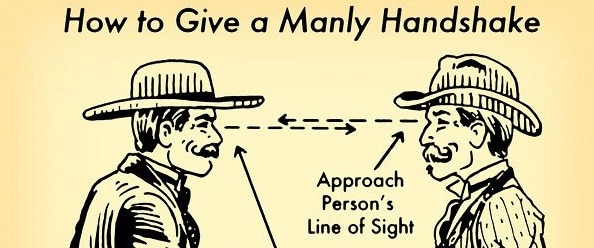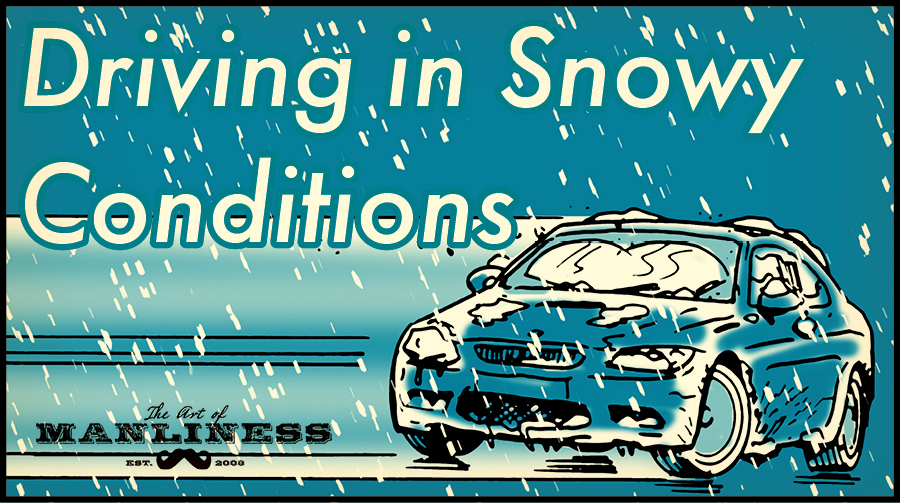
Editor’s Note: This is a guest article by Dave Elniski.
Driving may be the most dangerous task that the modern man performs on a regular basis. Vehicles are the safest they’ve ever been, and new technology gives drivers the feeling of sanctuary from external hazards, but collisions at highway speeds continue to show us that all these technological advancements have yet to make driving a risk-free task.
Central among the remaining risks are the vehicular operators with whom one is forced to share the road. There are those who intentionally drive aggressively, act like traffic rules are for drivers with less prowess than them, and perhaps even take pride in their ability to stunt. Arguably even more dangerous, are those drivers who hit the road with little thought given to the skill driving requires. These drivers may think of driving only as a means to get where they want to go, not as a proficiency worth developing. Both of these types of drivers are dangerous to themselves and others, but probably do not think of themselves that way.
I have always taken safe driving seriously. Though when I was younger I pushed the envelope of what a rusted-out pick-up could do in farmers’ fields and off-road trails, and my brother and I raced cars at amateur events, our parents instilled in us the belief that it is important to take driving seriously and make safety an internal value. When working as a long-haul trucker and safety officer for a trucking company, safe driving took on a new meaning as I became keenly aware that my driving behaviors were now tied to my livelihood, and adherence to the rules of the road became more than just the right thing to do for me, but evolved into an activity in which I take pride.
I’m proud of the hundreds of thousands of accident-free miles I have logged, but what really drove home the importance of safe driving for me was becoming a father. Hauling my entire family around in a small SUV gives me a great sense of responsibility, and I consider safe behavior something I owe my family, which depends on me. So, although it may not sound exciting to talk about safe driving, it is something about which I am extremely passionate.
For over 50 years, defensive driving has been a topic taught for the purposes of improving safety for and collaboration between drivers on the road. I think most people have heard about defensive driving and understand it to mean driving in a manner that anticipates mistakes by others and aims to increase on-road safety for all road users, a definition which I consider accurate. It is the basic principles of defensive driving that I want to discuss in this article, because I believe that these offer the surest path to improving one’s driving skill and increasing the likelihood of making it safely to each destination. And given that driving may continue to be the most hazardous task our children will have to face in their lives, it is a skill that every man and father should develop so that it can be modeled and taught to our youth.
As a professional truck driver and safety officer for a flatbed trucking company, I incorporate defensive driving practices and techniques into my own driving and into training programs for other drivers. Although there are many specific techniques involved in professional and defensive driving, I would like to explain three key concepts that I believe are cornerstones to this skillset: 1) preventability versus fault, 2) following distance, and 3) detachment from other drivers.
Cornerstone #1: Consider Preventability Versus Fault
In defensive driving, one of the most important concepts is preventability. The National Safety Council defines a preventable collision as “one in which the driver failed to do everything that reasonably could have been done to avoid it.” This is different from fault. Most people, when discussing an accident, talk about who was at fault; from an insurance standpoint this is indeed very important when settling claims. However, even though you may not be at fault for an accident, you still may have contributed to it.
For example, let’s say your vehicle is rear-ended at a stop sign. This is a classic example of an accident where you would probably not be directly at fault. But if your rear taillights were not working, it could be argued that this accident was somewhat preventable if the other driver could not easily see that you were stopped. In this way, you would have contributed to the accident by not having working lights and you failed to do everything reasonable to prevent the accident.
Trucking companies do not have their safety performance measured in terms of fault. Our accidents are counted against us unless we can show that the accident was non-preventable. Proper pre- and post-trip vehicle inspections and following all the rules of the road are the best way to ensure we are not involved in either preventable or at-fault accidents, and by considering preventability in driving decisions by anticipating other drivers’ mistakes, a professional driver can step up his game.
A mature non-professional driver should do likewise. Always be thinking about preventing accidents, not just about not being at fault. Don’t trust that other drivers will follow the rules. What makes a defensive driver so safe is that he is vigilantly looking for mistakes other drivers will invariably make.
Cornerstone #2: Be Mindful of Following Distance
When it comes to driving any vehicle, following distance is one of the most important factors in determining a driver’s likelihood of getting into a collision and in their overall stress level.
Following distance is the distance between the front of your vehicle and the rear of the vehicle in front of you. A common way to measure this is in seconds: when the rear of the vehicle in front of you passes by an object, start counting until you reach that same point. That amount of time is your following distance. Heavy truck drivers should aim for 7 seconds or more of following distance at highway speeds when the roads are dry; when visibility is reduced and the road is wet, slick, or icy, considerably more time should be added. For cars, 3-4 seconds is a good number but when road conditions deteriorate, this distance should be increased substantially.
Following distance is the amount of time you have to react to collisions and hazards in front of your vehicle. Driving too closely to the vehicle in front of you is dangerous, discourteous, and stressful. I find that when I adjust my speed to keep a large following distance, I am much more relaxed. I am also more confident in my ability to handle unexpected situations safely. Brake lights well ahead allow me time to respond to a possible problem in a calm and controlled manner; brake lights right in front of me are an immediate crisis.
Cornerstone #3: Remain Detached from Other Drivers
Being stuck behind or driving around inexperienced, inconsiderate drivers can be very frustrating and lead to feelings of anger. Sometimes it is someone who is distracted; sometimes it is someone who cut you off. When you are in scenic areas, it can be someone using the highway as their place to take pictures, causing them to drive slowly and unpredictably.
Regardless of the offense, there is nothing we can do about the actions of others. If we get angry because of mistakes others make, we are the ones who are harmed. If, in our anger, we do something we would not do when calm, our anger can cause us future regret and in extreme cases could cause an accident or violent encounter.
One of the best pieces of driving advice I could give someone is to see other drivers as what they are: road hazards we can’t control. If someone cuts me off and I think of it as a personal attack against me, I am likely to get mad. If someone does the same thing but I just see them as a hazard and react by carefully slowing down and giving them space, I find that I am calmer and quickly forget the incident. This is remaining detached from other drivers: defensive drivers do not take the actions of other drivers personally and don’t play dangerous games of highway power and revenge.
Bad drivers are like deer on the road: we must treat them with caution but should not waste our anger on them. When I encounter the dangerous actions of other drivers, I tell myself that they probably don’t know any better, try to get on with my day, and generally find that this approach helps me be calmer and more rational.
By the way, the principles in this section may sound familiar to a reader familiar with Stoicism. Stoic philosophy is very applicable to driving. When I started reading about Stoicism and practicing it, I saw immediately how much this was going to help my driving. As Epictetus said, “Some things are in our control and others not,” and this advice certainly applies when it comes to keeping calm and detached from the actions of others when driving.
Conclusion
In an interpretation of Aristotle’s philosophy, Will Durant wrote: “We are what we repeatedly do.” I like this quote and believe what it says, for our actions are better indicators of who we are than our words. I can’t actually be a safe driver if I do not use safe driving techniques and put defensive driving principles into practice, no matter how skilled and safe I claim to be.
I firmly believe that adopting the three cornerstones of defensive driving explained above makes me a safer driver and helps me make better decisions on the road. Additionally, because of how much less stressful and more enjoyable driving becomes when these principles are practiced, defensive driving becomes a positive feedback loop: the more I do it, the more I want to do it.
Safe driving is important. Don’t believe that your modern vehicle will always protect you. Don’t trust that fellow drivers will always follow the rules. Don’t get complacent behind the wheel.
Do treat driving as a skill that requires practice and mindfulness, remembering that we have the responsibility to protect our own lives, the lives of our occupants, and the lives of those around us.
_______________________
Dave Elniski is a happy husband to Katy and a proud father to his three-year-old twins Susan and Mack. He works in the trucking industry as a safety professional and continues to drive long-haul flatbed trucks from time to time to keep his skills current.
Tags: Cars





